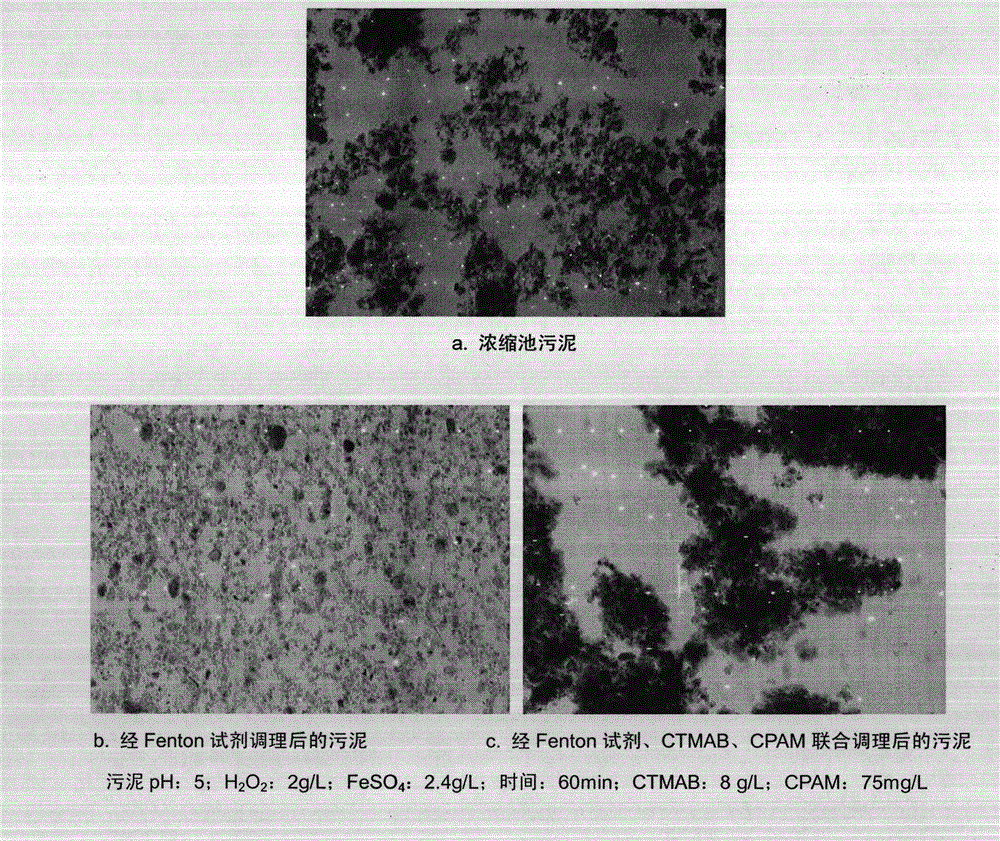Joint-conditioning dehydration method for sludge
An ideal technology for sludge, which is applied in the field of combined sludge conditioning and dehydration, can solve the problems of large amount of pretreatment sludge and difficult operation control, etc., and achieve the goal of increasing solid content, improving sludge dewatering performance, and facilitating comprehensive utilization Effect
- Summary
- Abstract
- Description
- Claims
- Application Information
AI Technical Summary
Problems solved by technology
Method used
Image
Examples
Embodiment 1
[0026] Its operation process is as figure 1 As shown, the sludge in the concentration tank is acidified with inorganic acid (pH=5), and then transported to the Fenton reagent oxidation tank (H 2 o 2 The dosage is 2g / L, FeSO 4 The dosage is 2.4g / L, and the reaction time is 60 minutes), the sludge reacts with the Fenton reagent under continuous stirring in the oxidation tank, the organic matter in the sludge is degraded, and the cell wall and extracellular polymer (EPS) in the sludge After being dissolved and broken, a large amount of water inside the cells and EPS bound water are released; when the Fenton reaction is complete, 8g / L of CTMAB is added for conditioning; then the sludge is flocculated and conditioned with CPAM (CPAM is added at 75mg / L L, the stirring method is 400rpm for 30s and then 60rpm for 5min), the dispersed fine particles in the sludge are adsorbed and flocculated to achieve good mud-water separation; then the sludge is transported to the mechanical dehydr...
PUM
 Login to View More
Login to View More Abstract
Description
Claims
Application Information
 Login to View More
Login to View More - R&D
- Intellectual Property
- Life Sciences
- Materials
- Tech Scout
- Unparalleled Data Quality
- Higher Quality Content
- 60% Fewer Hallucinations
Browse by: Latest US Patents, China's latest patents, Technical Efficacy Thesaurus, Application Domain, Technology Topic, Popular Technical Reports.
© 2025 PatSnap. All rights reserved.Legal|Privacy policy|Modern Slavery Act Transparency Statement|Sitemap|About US| Contact US: help@patsnap.com



